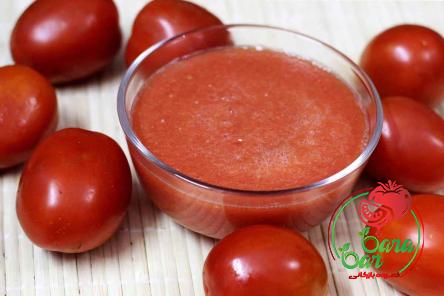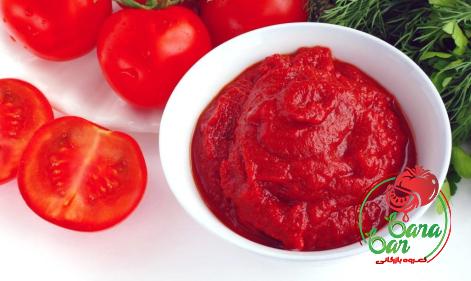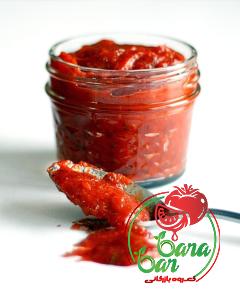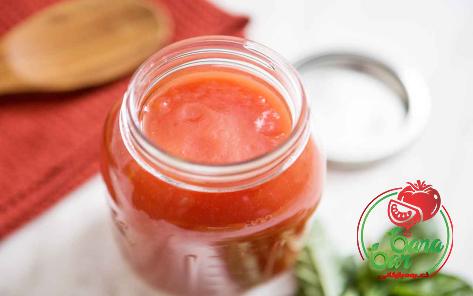Tomato paste holds a significant place in Egypt’s gastronomic landscape, offering a burst of vibrant flavors and adding depth to a myriad of dishes. This versatile ingredient is not only a staple in Egyptian cuisine but also plays a crucial role in the country’s culinary traditions. Join us on a journey through the rich history, diverse uses, and production processes of tomato paste in Egypt. The Origins of Tomato Paste in Egypt: Tomatoes, a key ingredient in the production of tomato paste, have been cultivated in Egypt for centuries. The warm climate and fertile soil of the Nile Delta provide optimal conditions for growing tomatoes, making Egypt a prime location for tomato cultivation. The history of tomato cultivation in Egypt dates back to ancient times, with references to tomatoes found in Egyptian hieroglyphics. Over the years, tomatoes have become an integral part of Egyptian cuisine, with tomato paste emerging as a popular way to preserve and intensify the flavor of this versatile fruit. The Production Process of Egyptian Tomato Paste: The production of tomato paste in Egypt involves a meticulous process that begins with the selection of high-quality, ripe tomatoes. These tomatoes are carefully washed, sorted, and crushed to extract their pulp.

.
 The pulp is then cooked down to concentrate the flavors and remove excess moisture, resulting in a thick, rich tomato paste. The paste is then strained to remove any seeds or skin particles, ensuring a smooth and consistent texture. Finally, the tomato paste is packaged into jars or cans, ready to be enjoyed in a variety of dishes. Uses of Tomato Paste in Egyptian Cuisine: Tomato paste is a ubiquitous ingredient in Egyptian cuisine, adding depth and richness to a wide range of dishes. From hearty stews and soups to flavorful sauces and dips, tomato paste is a versatile addition that enhances the overall taste of a dish. One of the most iconic Egyptian dishes that feature tomato paste is “Mahshi,” which consists of vegetables stuffed with a savory rice and herb filling, simmered in a tomato-based sauce. Tomato paste is also used in traditional dishes like “Kofta” (spiced meatballs) and “Molokhia” (a green stew made from jute leaves), where it imparts a tangy sweetness and vibrant color to the dish. Health Benefits of Tomato Paste: In addition to its culinary uses, tomato paste also offers a host of health benefits. Tomatoes are rich in vitamins, minerals, and antioxidants, making them a nutritious addition to any diet. Tomato paste, in particular, is a concentrated source of these nutrients, providing a convenient way to boost your intake of essential vitamins like A, C, and K. Tomatoes are also rich in lycopene, a powerful antioxidant that has been linked to a reduced risk of certain cancers and heart disease. Incorporating tomato paste into your diet can help support overall health and well-being. The Popularity of Egyptian Tomato Paste in the Global Market: Egyptian tomato paste has gained popularity in the global market, thanks to its rich flavor, superior quality, and competitive pricing. Egypt is one of the leading producers of tomato paste in the Middle East and North Africa region, with a strong reputation for producing high-quality products that meet international standards. Egyptian tomato paste is exported to countries around the world, where it is used in a variety of cuisines and food products. The unique taste and quality of Egyptian tomato paste have made it a sought-after ingredient in international markets, further solidifying Egypt’s position as a key player in the global food industry.
The pulp is then cooked down to concentrate the flavors and remove excess moisture, resulting in a thick, rich tomato paste. The paste is then strained to remove any seeds or skin particles, ensuring a smooth and consistent texture. Finally, the tomato paste is packaged into jars or cans, ready to be enjoyed in a variety of dishes. Uses of Tomato Paste in Egyptian Cuisine: Tomato paste is a ubiquitous ingredient in Egyptian cuisine, adding depth and richness to a wide range of dishes. From hearty stews and soups to flavorful sauces and dips, tomato paste is a versatile addition that enhances the overall taste of a dish. One of the most iconic Egyptian dishes that feature tomato paste is “Mahshi,” which consists of vegetables stuffed with a savory rice and herb filling, simmered in a tomato-based sauce. Tomato paste is also used in traditional dishes like “Kofta” (spiced meatballs) and “Molokhia” (a green stew made from jute leaves), where it imparts a tangy sweetness and vibrant color to the dish. Health Benefits of Tomato Paste: In addition to its culinary uses, tomato paste also offers a host of health benefits. Tomatoes are rich in vitamins, minerals, and antioxidants, making them a nutritious addition to any diet. Tomato paste, in particular, is a concentrated source of these nutrients, providing a convenient way to boost your intake of essential vitamins like A, C, and K. Tomatoes are also rich in lycopene, a powerful antioxidant that has been linked to a reduced risk of certain cancers and heart disease. Incorporating tomato paste into your diet can help support overall health and well-being. The Popularity of Egyptian Tomato Paste in the Global Market: Egyptian tomato paste has gained popularity in the global market, thanks to its rich flavor, superior quality, and competitive pricing. Egypt is one of the leading producers of tomato paste in the Middle East and North Africa region, with a strong reputation for producing high-quality products that meet international standards. Egyptian tomato paste is exported to countries around the world, where it is used in a variety of cuisines and food products. The unique taste and quality of Egyptian tomato paste have made it a sought-after ingredient in international markets, further solidifying Egypt’s position as a key player in the global food industry.
..
 Conclusion: Tomato paste is more than just a condiment – it is a symbol of Egypt’s culinary heritage and a testament to the country’s rich agricultural traditions. From its origins in ancient Egypt to its widespread popularity in modern-day cuisine, tomato paste holds a special place in the hearts and kitchens of Egyptians around the world. Whether used in traditional dishes or innovative recipes, Egyptian tomato paste continues to captivate taste buds and inspire culinary creations. So, the next time you reach for a jar of tomato paste, remember the flavorful journey it has taken to reach your plate, and savor every delicious bite. The Versatility and Innovation of Egyptian Tomato Paste: Aside from its traditional uses in Egyptian cuisine, tomato paste has also found its way into modern and innovative recipes, showcasing its versatility as an ingredient. Chefs and home cooks alike have been experimenting with tomato paste in a variety of dishes, creating new flavor profiles and culinary experiences. From pasta sauces and marinades to dips and condiments, tomato paste adds a depth of flavor that elevates the simplest of dishes to a gourmet level. The rich umami taste of tomato paste pairs well with a wide range of ingredients, making it a versatile and essential pantry staple for cooks around the world. Sustainable Practices in Egyptian Tomato Paste Production: As the demand for tomato paste continues to grow, sustainable practices in its production have become increasingly important. Egyptian farmers and producers are adopting eco-friendly methods to cultivate tomatoes, such as drip irrigation and integrated pest management, to reduce water usage and minimize the use of pesticides. By implementing sustainable practices, Egypt’s tomato paste industry is not only ensuring the long-term health of the environment but also producing high-quality products that meet the demands of today’s conscientious consumers.
Conclusion: Tomato paste is more than just a condiment – it is a symbol of Egypt’s culinary heritage and a testament to the country’s rich agricultural traditions. From its origins in ancient Egypt to its widespread popularity in modern-day cuisine, tomato paste holds a special place in the hearts and kitchens of Egyptians around the world. Whether used in traditional dishes or innovative recipes, Egyptian tomato paste continues to captivate taste buds and inspire culinary creations. So, the next time you reach for a jar of tomato paste, remember the flavorful journey it has taken to reach your plate, and savor every delicious bite. The Versatility and Innovation of Egyptian Tomato Paste: Aside from its traditional uses in Egyptian cuisine, tomato paste has also found its way into modern and innovative recipes, showcasing its versatility as an ingredient. Chefs and home cooks alike have been experimenting with tomato paste in a variety of dishes, creating new flavor profiles and culinary experiences. From pasta sauces and marinades to dips and condiments, tomato paste adds a depth of flavor that elevates the simplest of dishes to a gourmet level. The rich umami taste of tomato paste pairs well with a wide range of ingredients, making it a versatile and essential pantry staple for cooks around the world. Sustainable Practices in Egyptian Tomato Paste Production: As the demand for tomato paste continues to grow, sustainable practices in its production have become increasingly important. Egyptian farmers and producers are adopting eco-friendly methods to cultivate tomatoes, such as drip irrigation and integrated pest management, to reduce water usage and minimize the use of pesticides. By implementing sustainable practices, Egypt’s tomato paste industry is not only ensuring the long-term health of the environment but also producing high-quality products that meet the demands of today’s conscientious consumers.
…
 This commitment to sustainability reflects Egypt’s dedication to preserving its agricultural heritage for future generations. Innovations in Packaging and Distribution: The packaging and distribution of Egyptian tomato paste have also seen innovations to meet the changing needs of consumers. While traditional glass jars and metal cans are still commonly used, manufacturers are exploring new packaging formats such as pouches and tubes for added convenience and portability. These modern packaging options not only enhance the shelf life of tomato paste but also make it easier for consumers to use and store the product. Additionally, advancements in distribution channels, such as e-commerce platforms and global market access, have made Egyptian tomato paste more accessible to a wider audience, allowing consumers to enjoy its unique flavors and quality from anywhere in the world. Cooking Tips and Recipes Featuring Egyptian Tomato Paste: To make the most of your Egyptian tomato paste, here are a few cooking tips and recipes to inspire your culinary creativity: 1. Substitute tomato paste for fresh tomatoes in recipes that call for a rich and concentrated tomato flavor, such as stews, sauces, and soups. 2. Create a simple pasta sauce by sautéing onions, garlic, and tomato paste in olive oil, then adding cooked pasta and fresh herbs for a quick and delicious meal. 3. Make a flavorful marinade by combining tomato paste with olive oil, vinegar, herbs, and spices, then marinate meat, poultry, or vegetables before grilling or roasting. 4. Use tomato paste as a base for homemade ketchup, barbecue sauce, or pizza sauce for a custom-made condiment that’s sure to impress. By incorporating Egyptian tomato paste into your cooking repertoire, you can unlock a world of flavors and possibilities that will elevate your dishes to new heights of culinary excellence. In conclusion, tomato paste in Egypt is not just a condiment or ingredient – it is a reflection of Egypt’s rich agricultural heritage, culinary traditions, and innovative spirit. From its humble beginnings in ancient Egypt to its global popularity today, tomato paste continues to captivate taste buds and inspire culinary creations around the world. Whether used in traditional dishes or modern recipes, Egyptian tomato paste remains a symbol of quality, flavor, and tradition that is cherished by food enthusiasts everywhere. So, the next time you enjoy a dish enhanced by the rich taste of tomato paste, remember the vibrant history and flavorful journey that has brought this versatile ingredient to your table.
This commitment to sustainability reflects Egypt’s dedication to preserving its agricultural heritage for future generations. Innovations in Packaging and Distribution: The packaging and distribution of Egyptian tomato paste have also seen innovations to meet the changing needs of consumers. While traditional glass jars and metal cans are still commonly used, manufacturers are exploring new packaging formats such as pouches and tubes for added convenience and portability. These modern packaging options not only enhance the shelf life of tomato paste but also make it easier for consumers to use and store the product. Additionally, advancements in distribution channels, such as e-commerce platforms and global market access, have made Egyptian tomato paste more accessible to a wider audience, allowing consumers to enjoy its unique flavors and quality from anywhere in the world. Cooking Tips and Recipes Featuring Egyptian Tomato Paste: To make the most of your Egyptian tomato paste, here are a few cooking tips and recipes to inspire your culinary creativity: 1. Substitute tomato paste for fresh tomatoes in recipes that call for a rich and concentrated tomato flavor, such as stews, sauces, and soups. 2. Create a simple pasta sauce by sautéing onions, garlic, and tomato paste in olive oil, then adding cooked pasta and fresh herbs for a quick and delicious meal. 3. Make a flavorful marinade by combining tomato paste with olive oil, vinegar, herbs, and spices, then marinate meat, poultry, or vegetables before grilling or roasting. 4. Use tomato paste as a base for homemade ketchup, barbecue sauce, or pizza sauce for a custom-made condiment that’s sure to impress. By incorporating Egyptian tomato paste into your cooking repertoire, you can unlock a world of flavors and possibilities that will elevate your dishes to new heights of culinary excellence. In conclusion, tomato paste in Egypt is not just a condiment or ingredient – it is a reflection of Egypt’s rich agricultural heritage, culinary traditions, and innovative spirit. From its humble beginnings in ancient Egypt to its global popularity today, tomato paste continues to captivate taste buds and inspire culinary creations around the world. Whether used in traditional dishes or modern recipes, Egyptian tomato paste remains a symbol of quality, flavor, and tradition that is cherished by food enthusiasts everywhere. So, the next time you enjoy a dish enhanced by the rich taste of tomato paste, remember the vibrant history and flavorful journey that has brought this versatile ingredient to your table.










Your comment submitted.